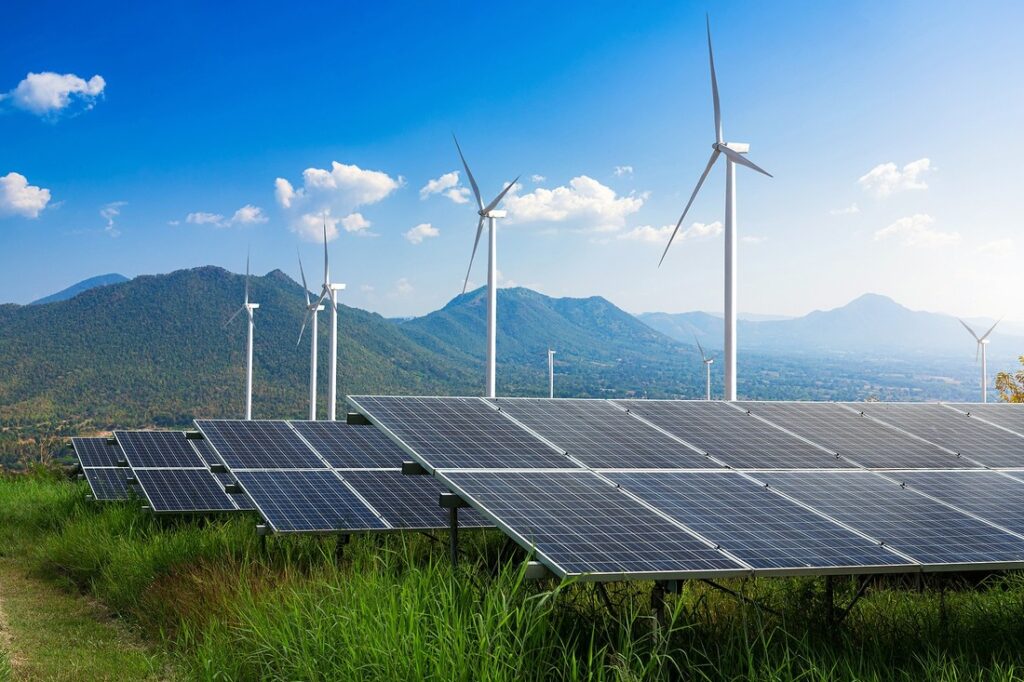The debate over wind and solar energy options increases as the world transitions to renewable energy sources. Like other sources of energy, wind and solar energy both help in the reduction of fossil fuel reliance and aid in climate change. But which one of the two options is more sustainable? Sustainability entails much more than just environmental efficiency.
Wind and solar energy sources are complex to compare considering their advantages and disadvantages. Both strengths and weaknesses exist for wind and solar energy, and therefore, their ease of sustainability depends on geographic area, maintenance costs, land use, and more. In this paper, we will discuss the details of both energy sources to determine which one is more sustainable.
Environmental Impacts:
Both wind and solar energy have a significantly lower impact on carbon emissions than fossil fuel energy. Wind turbines generate power without emitting greenhouse gases, and solar panels convert sunlight into energy with minimal pollution. However, the production processes, installation, and eventual disposal of these systems do have an environmental impact. Concrete, metals, and rare earth elements are required for the construction of wind turbines, while solar panels are dependent on silicon, silver, and other materials.
Although the coal and natural gas carbon footprints are far greater, the environmental implications through the mining and production processes do negatively impact the region. In regard to land use, agricultural activities can be conducted alongside wind farms, while solar farms require larger land stretches, having potential negative impacts on the ecosystems contained within that land.
Efficiency and Energy Output:
In the wind-solar power comparison, wind energy has the upper hand in terms of efficiency of energy conversion. In comparison to a solar panel installation, a wind turbine can generate significantly more electricity. Unlike solar panels, which can only harness energy during the day, wind turbines can generate energy throughout the day and night. A downside to wind is that it tends to be sporadic, leading to dry spells in energy output.
Solar energy, on the other hand, is disruptive during cloudy days but very predictable during sunny days. Both situations require batteries to store energy to deal with the periodic outages. The capacity factor, which determines how often a power-producing service runs at its highest potential, is wind energy’s advantage over solar energy due to wind energy having higher capacity factors than solar energy.
Cost and Economic Viability:
In recent years, the cost of both wind and solar energy has become more economical. Both forms of energy became feasible due to the drastic decrease in the prices of solar panels, which is a result of new technology and mass production, and the long-term benefits wind energy offers despite its high installation costs. The cost of maintenance also differs, with wind energy requiring more maintenance due to its moving parts, while solar panels are less demanding. Government funding, such as tax breaks, subsidies, and financial aid, is vital for both energy sources to be economically beneficial. Still, regions with strong wind resources will find that wind energy is more cost-effective in the long run than solar power.
Land Use and Space Requirements:
Comparing the two sources of utilities, land use is an important consideration when analyzing wind and solar energy. The space needed for wind energy is more compatible with agriculture because while the turbines do require a large area, the actual farmable space on the turbines is used for farming or other activities. Solar energy, on the other hand, has the possibility of causing deforestation or the destruction of other natural spaces, as it does need a considerable amount of land.
Solar water heaters do address this problem of additional land, though, as augmenting the existing territory does not necessitate extra land. In areas with high population density, solar energy may be more practical because of restrictions on available space. On the other hand, large-scale solar farms can cause ecological problems if not properly managed.
Reliability and Storage Solutions:
Both wind and solar power have to deal with intermittency issues that require efficient storage options. Power from the wind is always available but highly dependent on the wind speed, which differs by location and season. Solar power is much more predictable but only available during the day, thus requiring batteries to store energy for use at night.
Developments in battery technology, like lithium-ion and solid-state batteries, assist in filling the gap in reliability. Moreover, the integration of wind and solar energy into smart grids and hybrid systems can improve the stability of energy systems. Geographic diversity is also a factor; areas with reliable sunlight can benefit more from solar energy, while areas with consistent wind patterns can depend more on wind energy.
Conclusion:
Both wind and solar energies are sustainable options compared to fossil fuels, but their practicality in usage is dictated by a broad range of factors. Contrarily, wind energy is typically more efficient, requires less space per unit of electricity produced, and provides greater energy output consistency. At the same time, it incurs higher maintenance costs and has greater locational constraints.
With lower maintenance costs and the ability to be deployed in urban settings, solar energy is more accessible, but its large-scale projects require considerable space. In the end, the decision is best informed by regional conditions, economic considerations, and energy demand. In balanced energy strategies, combining both wind and solar power optimizes sustainability and reliability, propelling society towards enhanced energy integrity and a greener future.
FAQs:
1. Which of the two is cheaper, wind or solar energy?
Wind and solar have both become economical in recent times; however, location dictates which one is comparatively cheaper. Solar panels offer lower initial expenditures and maintenance costs, while wind turbines have higher installation costs but increase in energy output over time.
2. Which energy source has a lower impact on the environment?
Solar and wind both have minimal emissions, but in comparison, wind turbines use less space than solar farms. The manufacturing processes for both do pose some environmental issues, however, posing sustainability concerns.
3. Is it possible to combine wind energy with solar energy?
Yes, wind and solar energy can be combined to improve the consistency of renewable energy. Hybrid systems use both sources to counterbalance energy production variation.
4. What are the primary disadvantages of using wind energy and solar energy?
Wind energy is limited by wind speed and can be unreliable in some areas. Solar energy is available only when the sun is shining, making it weather-dependent. Both require storage systems to provide a consistent energy supply.
5. Which one is more sustainable, wind energy or solar energy, in the long run?
Depends on the location, costs, and rate of technological innovations. Wind energy is usually more efficient, but solar energy is more readily available. Most of the time, a combination of both would be the optimum answer towards a sustainable future.

